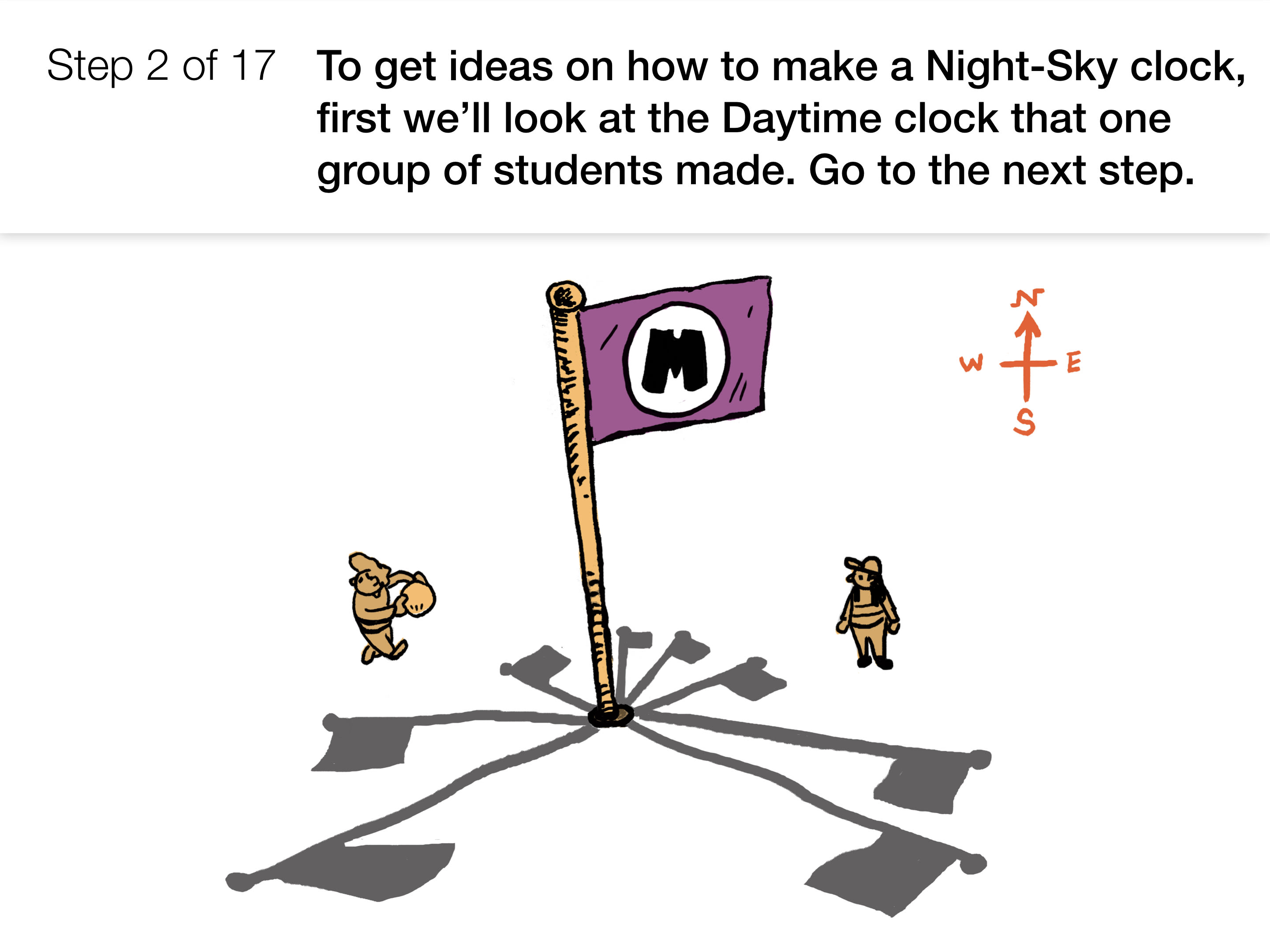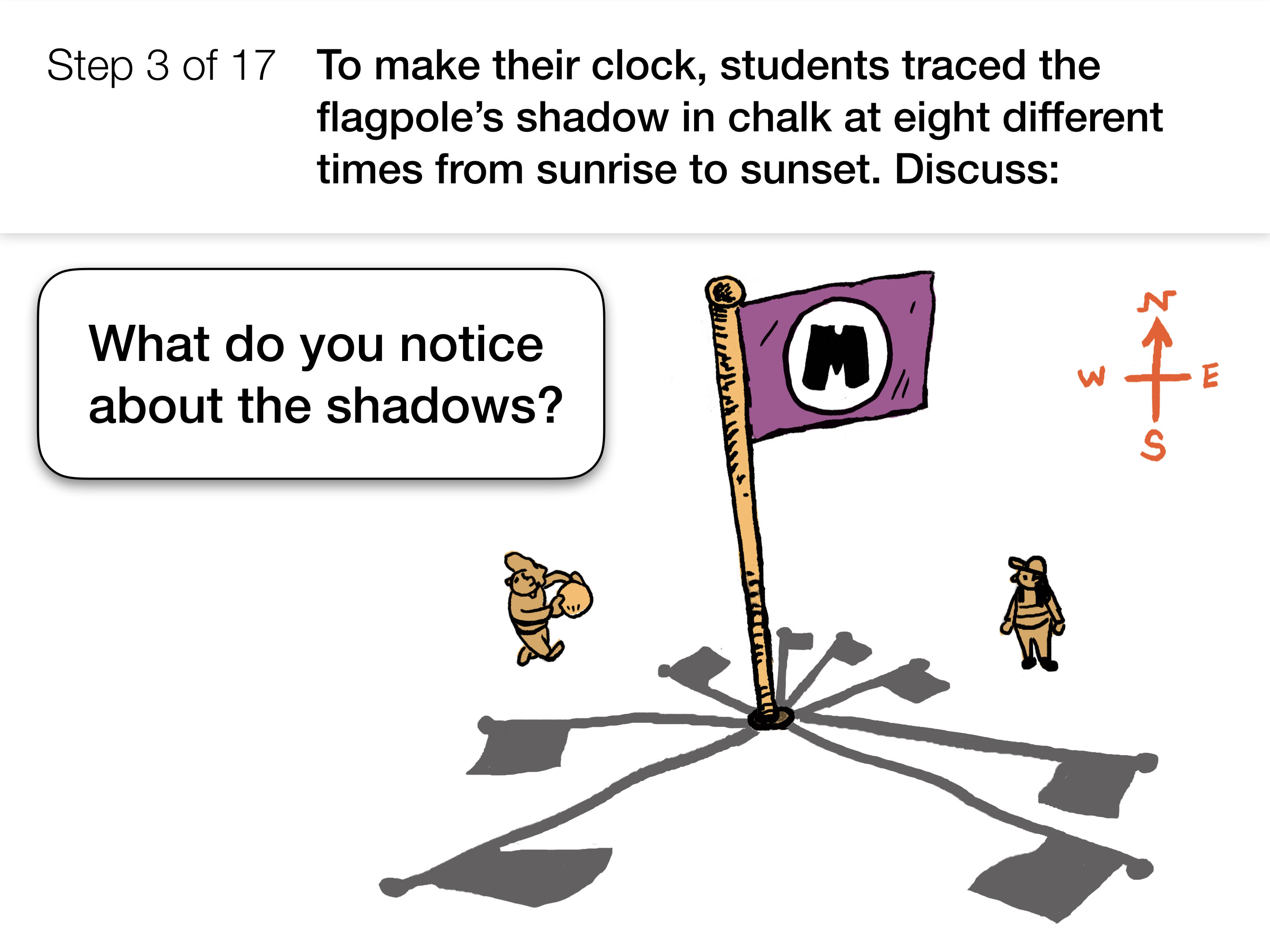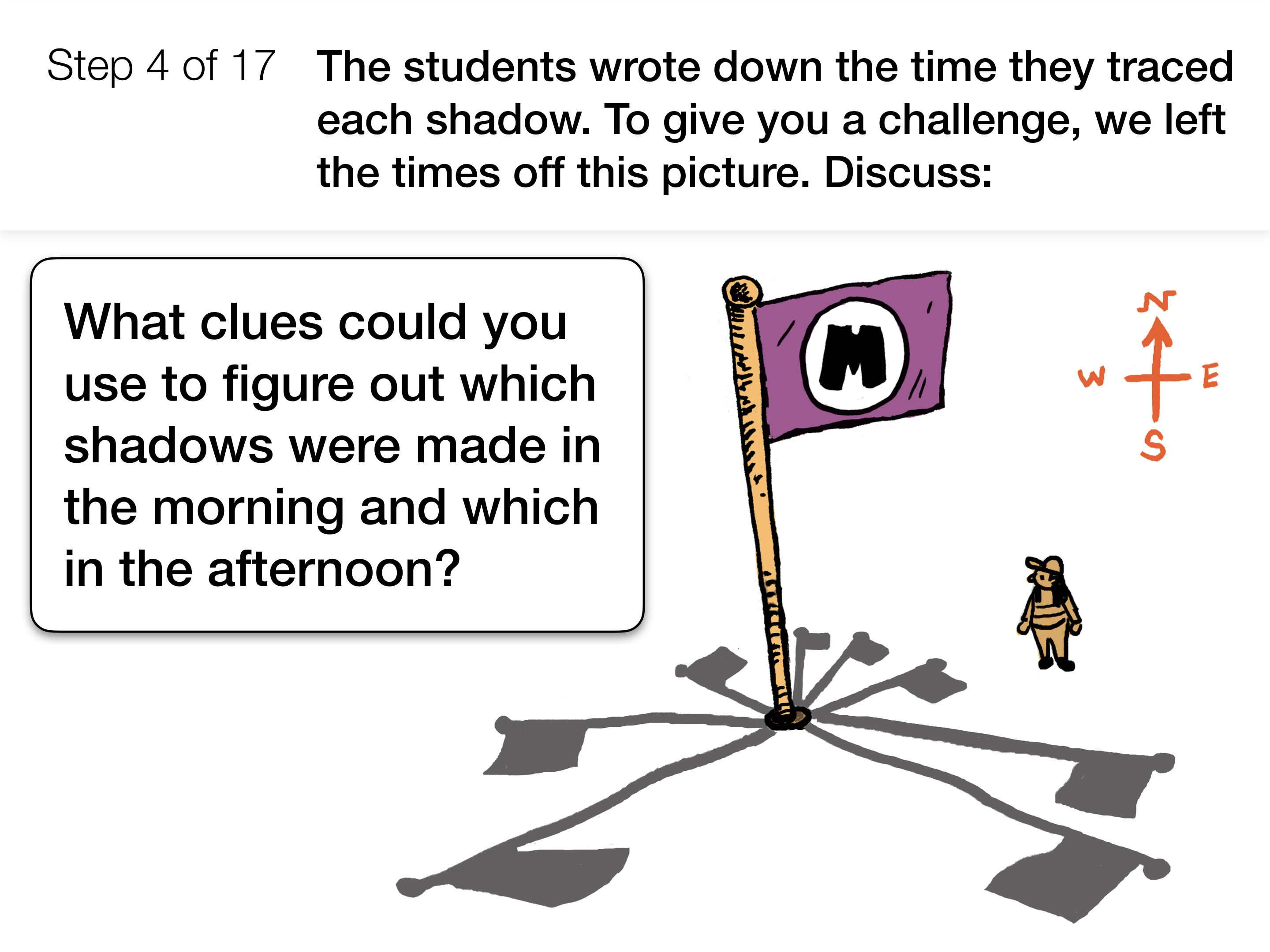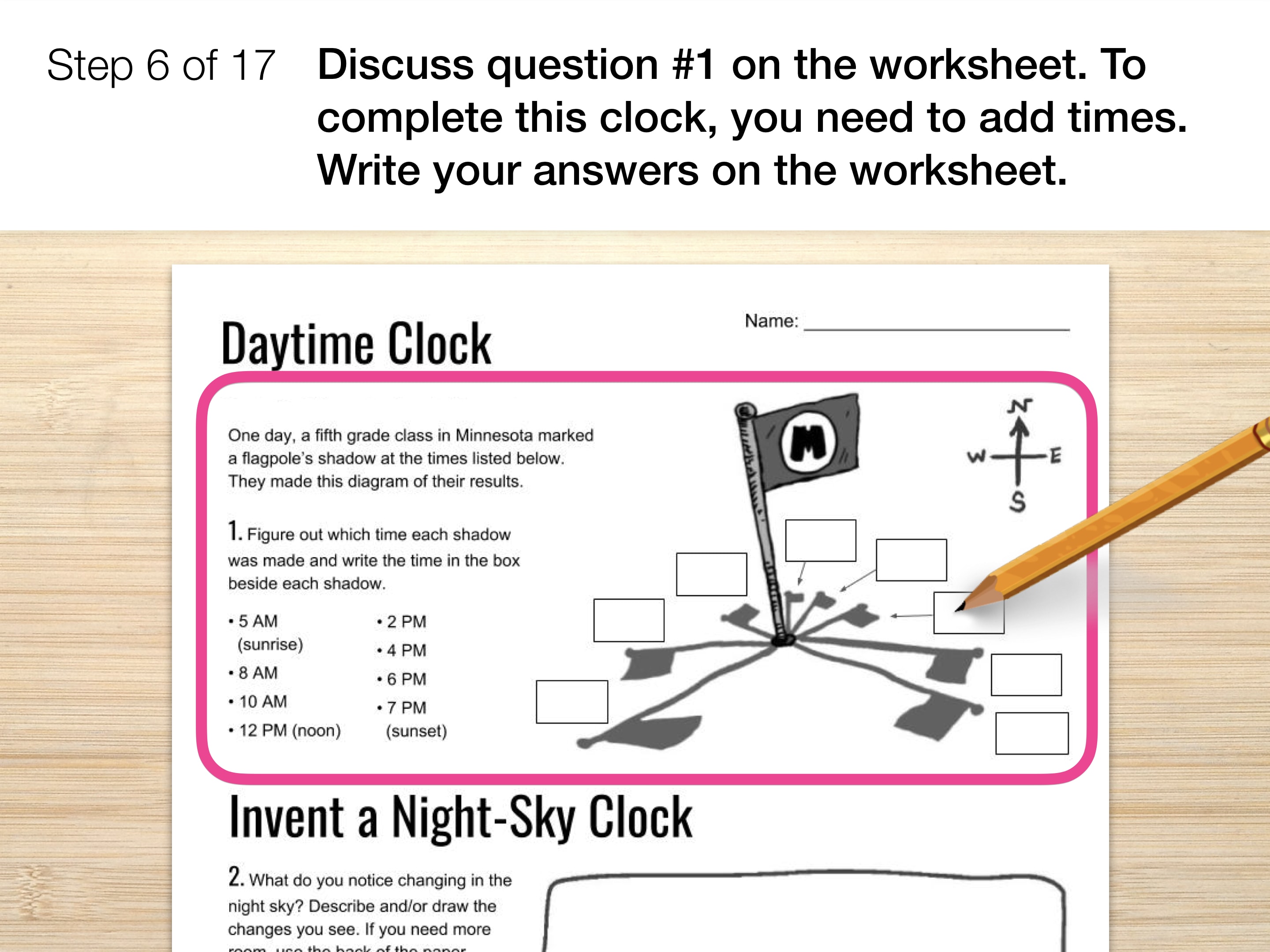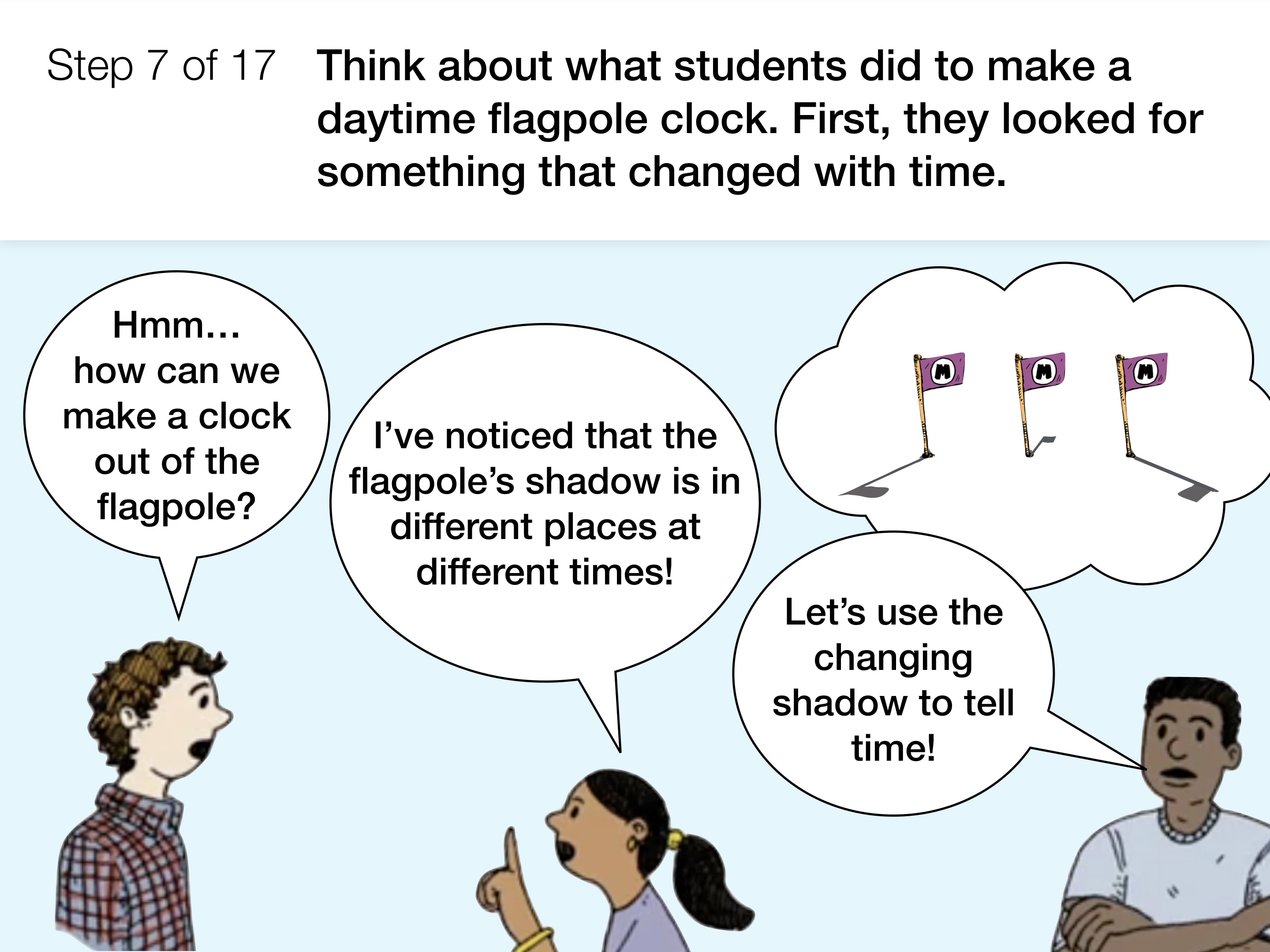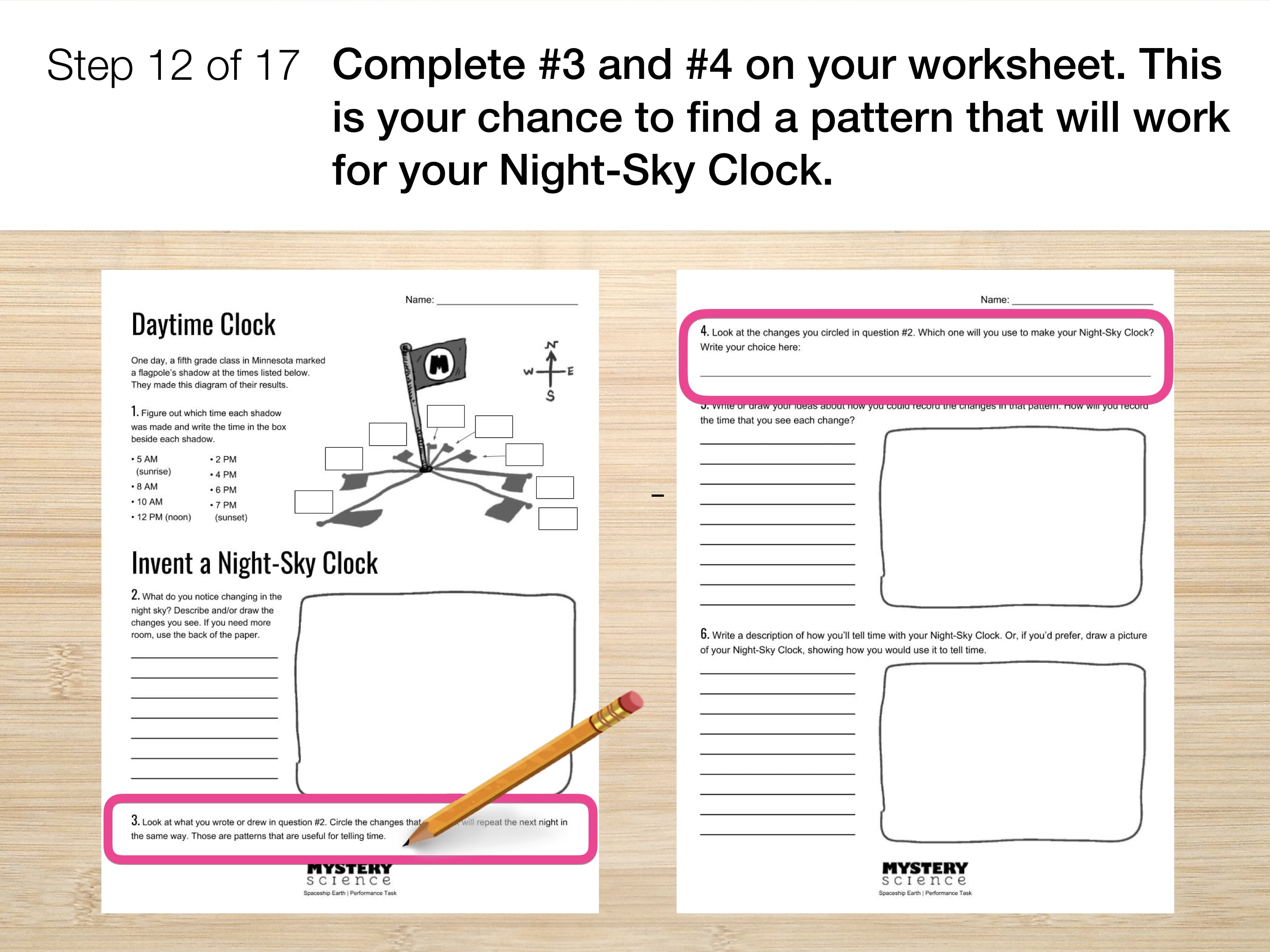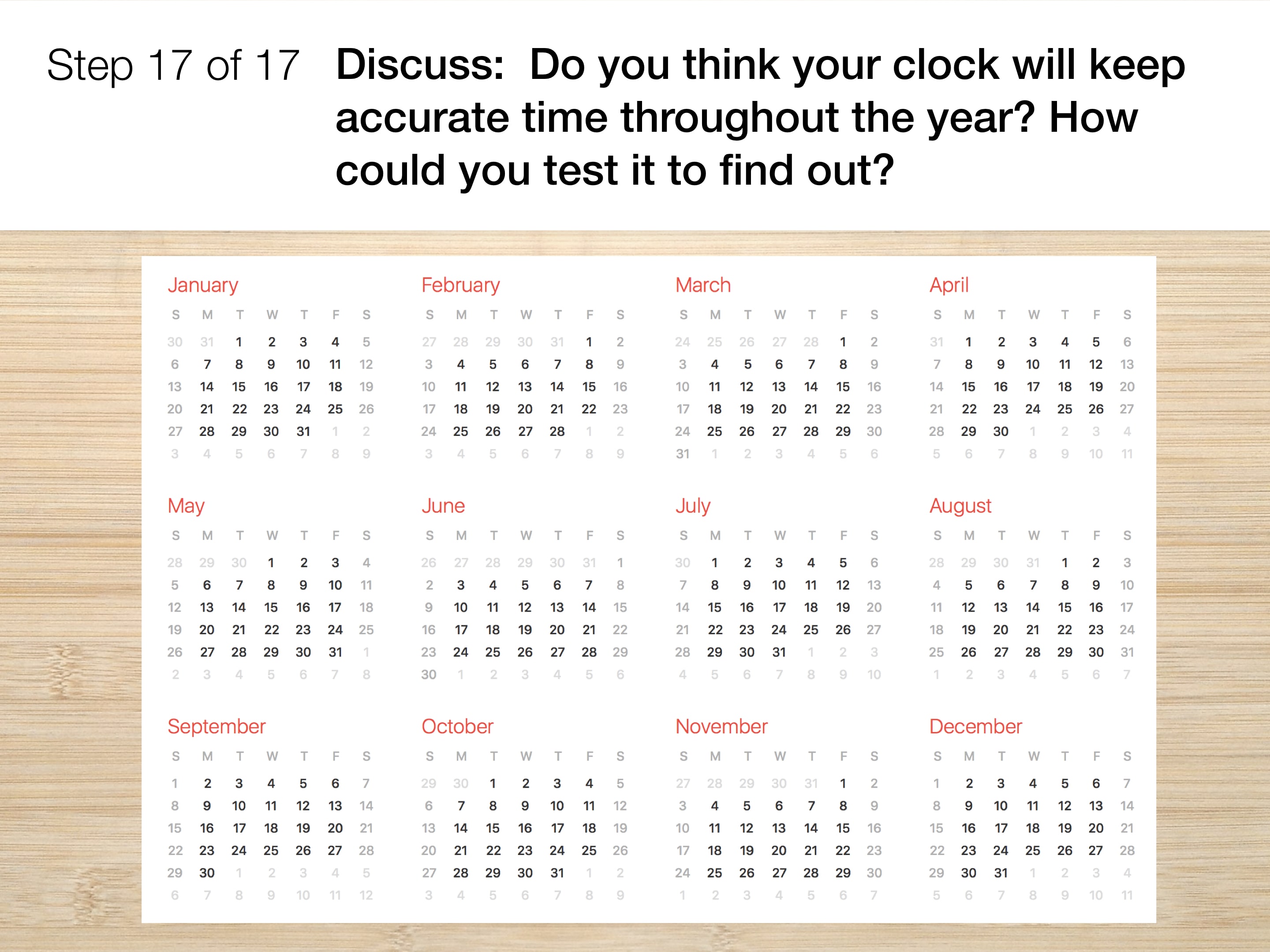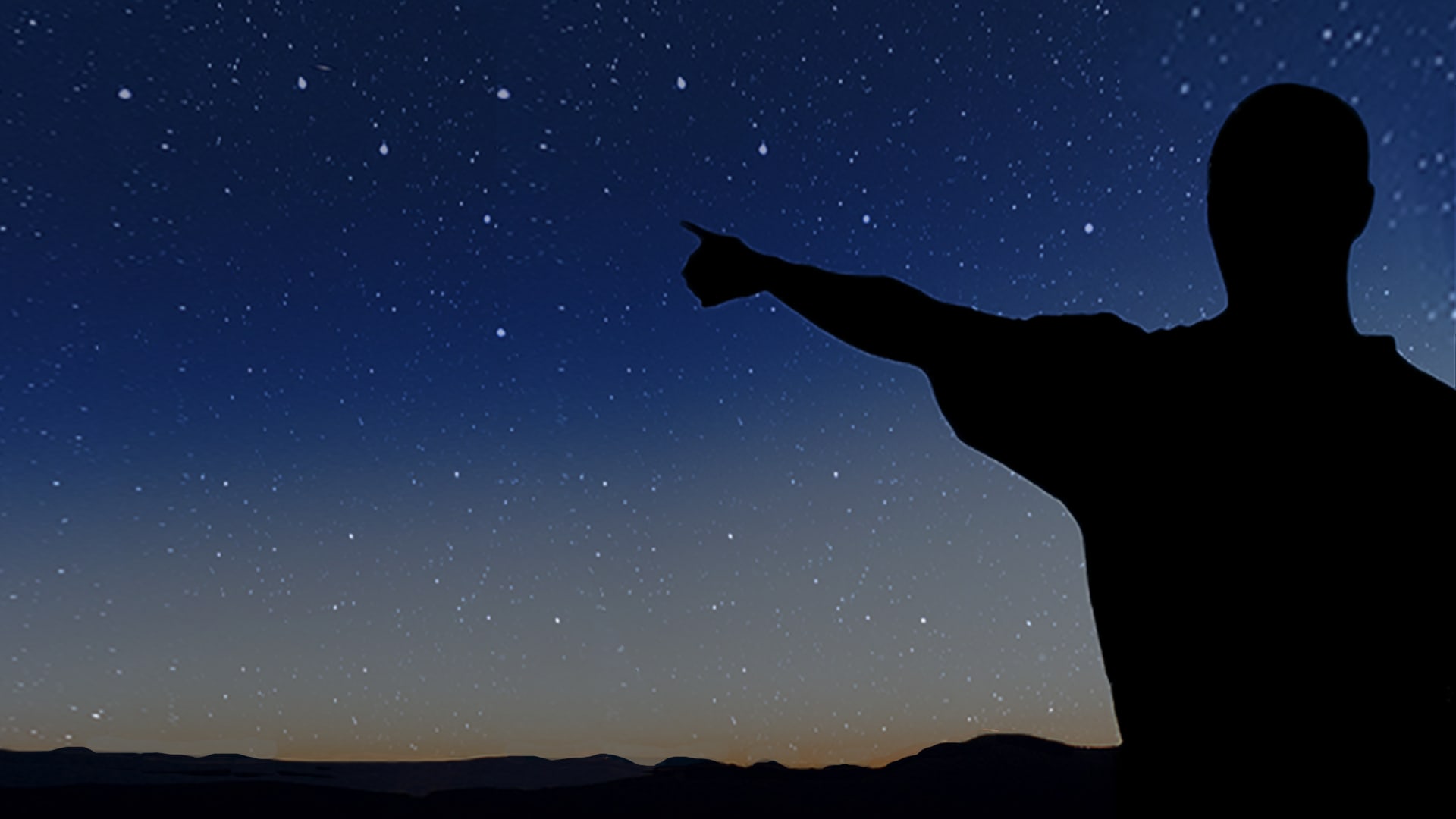- What causes the patterns found in star trails?
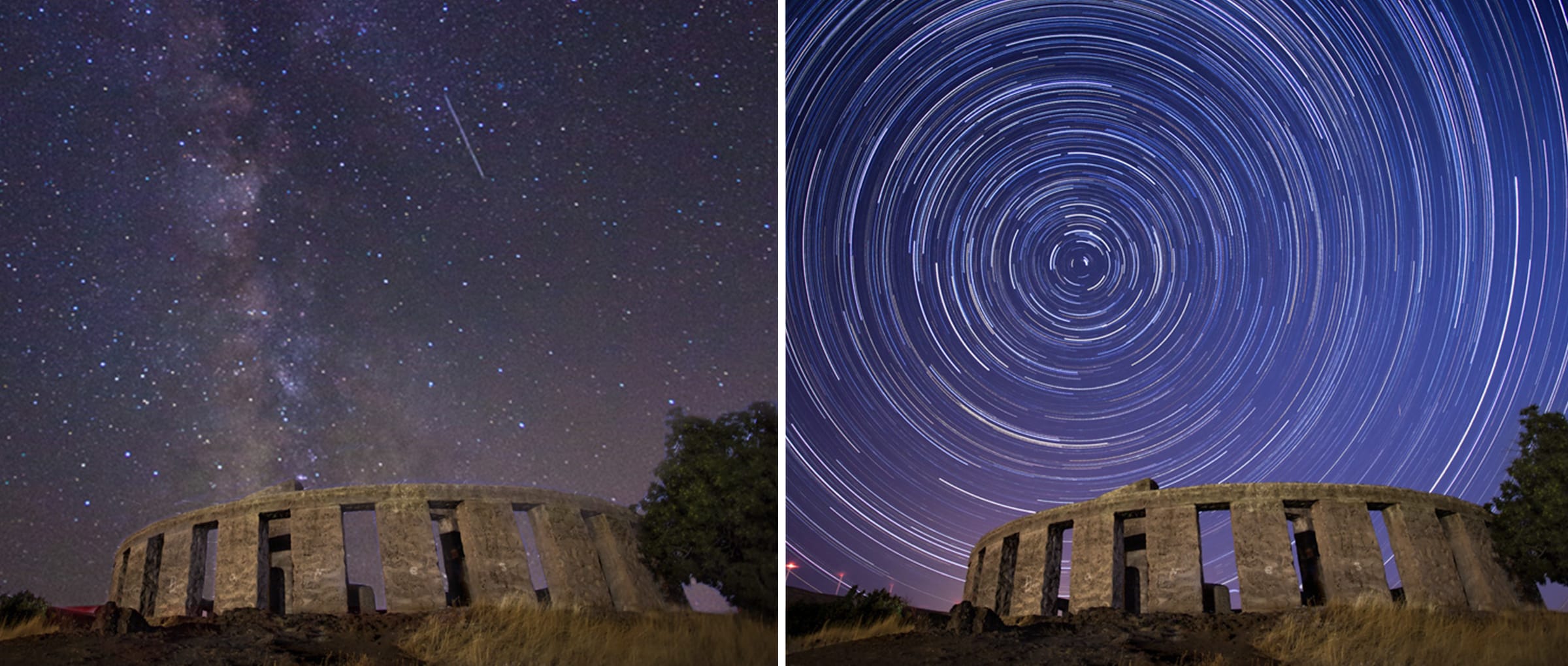
- The Sun seems to move across the sky because the Earth is spinning.
- The Sun’s apparent movement across the sky makes shadows move. You can use a shadow’s movement to tell what time of day it is.
- The Sun’s path across the sky changes with the seasons of the year. It climbs higher in the sky in summer than in winter.
- The Earth orbits the Sun each year. Because of this, you see different parts of the night sky and different constellations each season.
- The Moon goes through phases over the course of a month.
- Planets are other worlds that orbit the Sun.
- Gravity pulls you toward the center of the Earth. All planets have gravity, but its pull is different on different planets.
- The Sun is a star. If you were far away from the Sun, it would look like any other star.
If you haven't completed your final Night-Sky Patterns worksheet, now is the time to do so. We'll review what causes the star trails in the next few slides.

In the beginning of this unit, we learned that the Earth is spinning. This makes it appear that the Sun moves across the sky, when we are the ones actually spinning! It’s day when we face toward the Sun, and night when we face away from it.
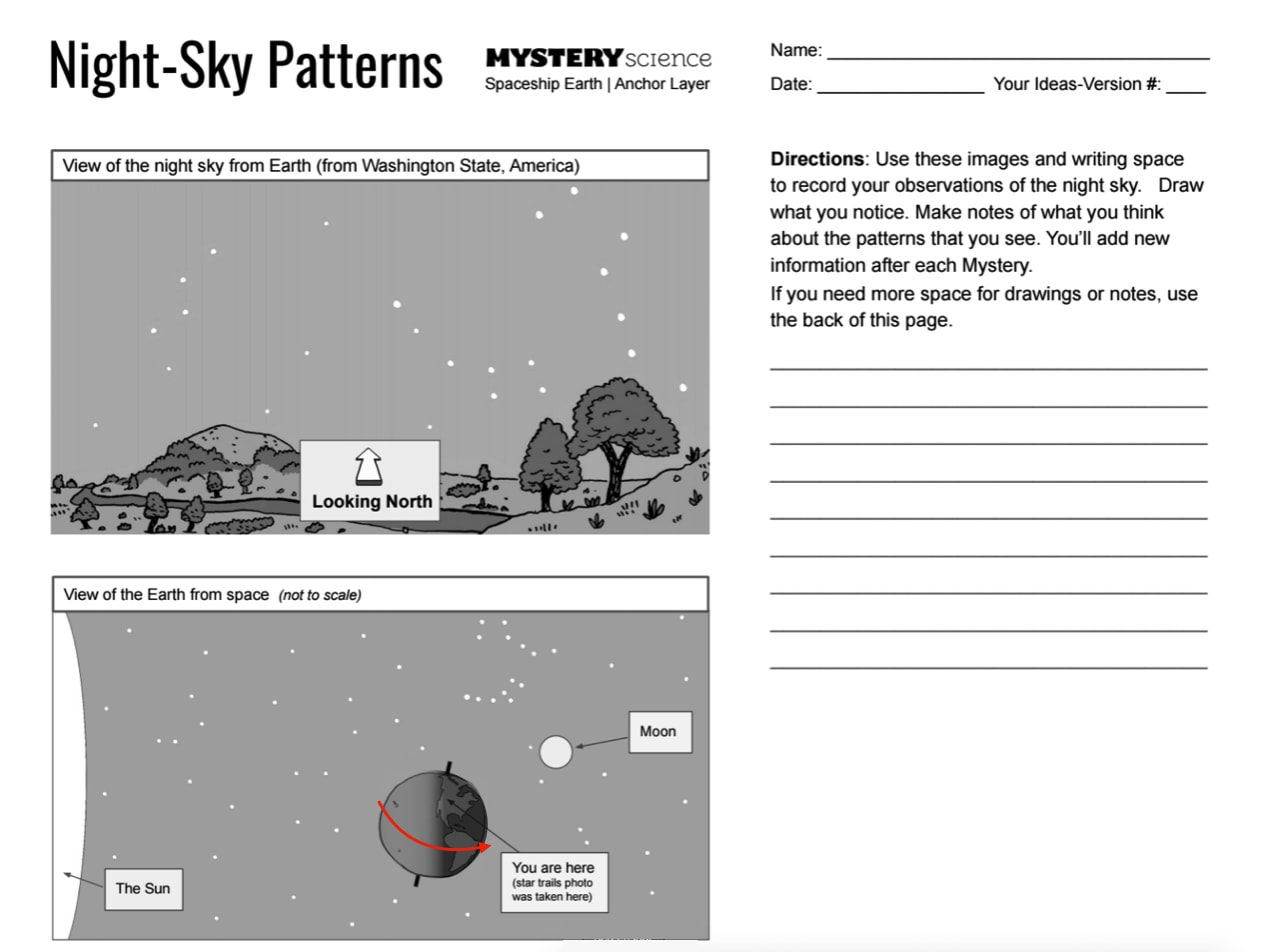
We then learned that the stars appear to rise and set during the night in the same way that the Sun appears to rise and set during the day. It all happens for the same reason: we are on a spinning Earth!
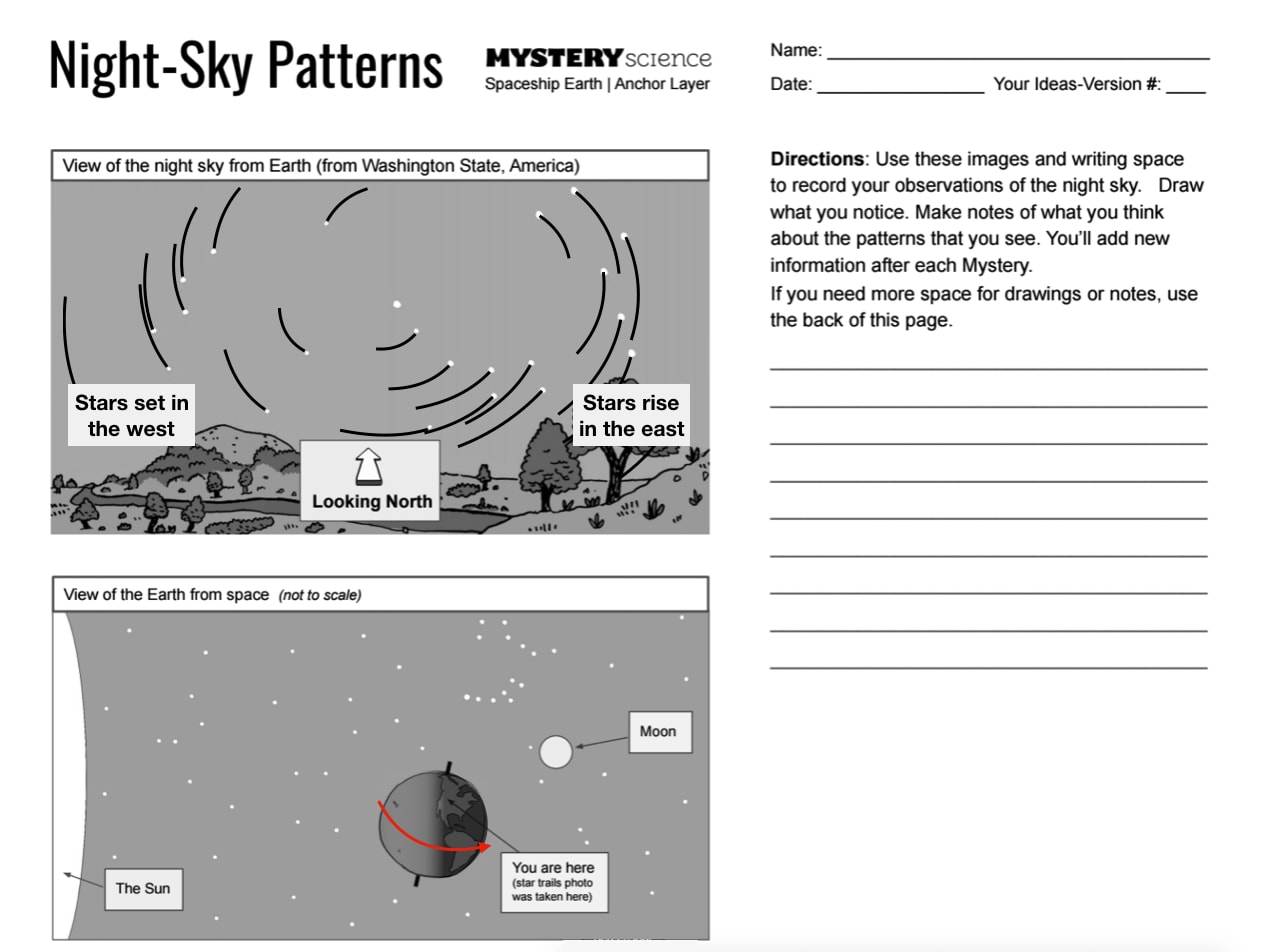
Notice that the stars themselves are not spinning. We are on a spinning Earth, and this makes it appear like the stars are moving—even though they aren’t!
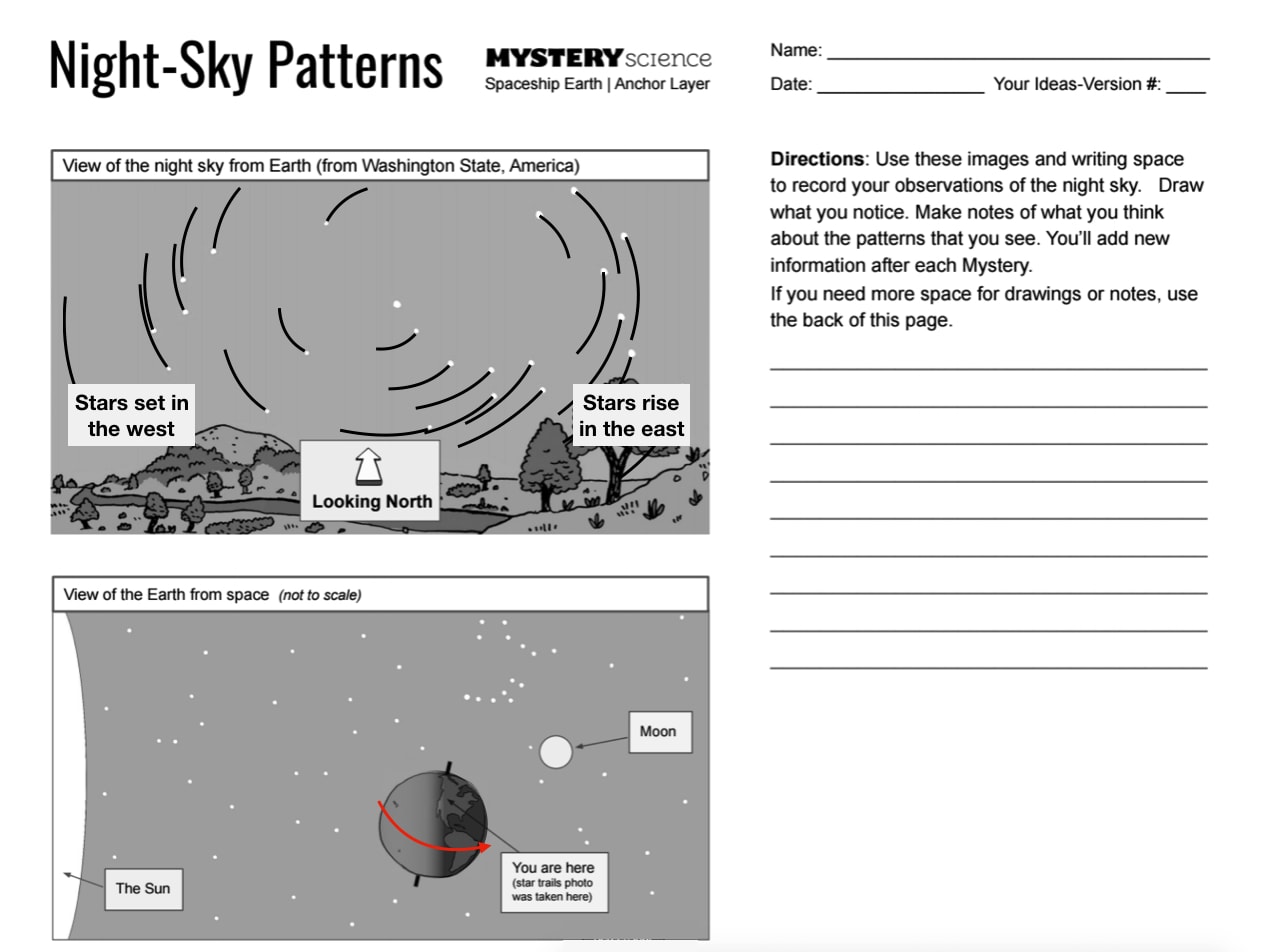
The stars appear to spin around the North Star. This isn’t what’s happening, though: we are on a spinning Earth! There is an imaginary line called an axis that we spin around, and it just so happens to be almost perfectly in line with the North Star.
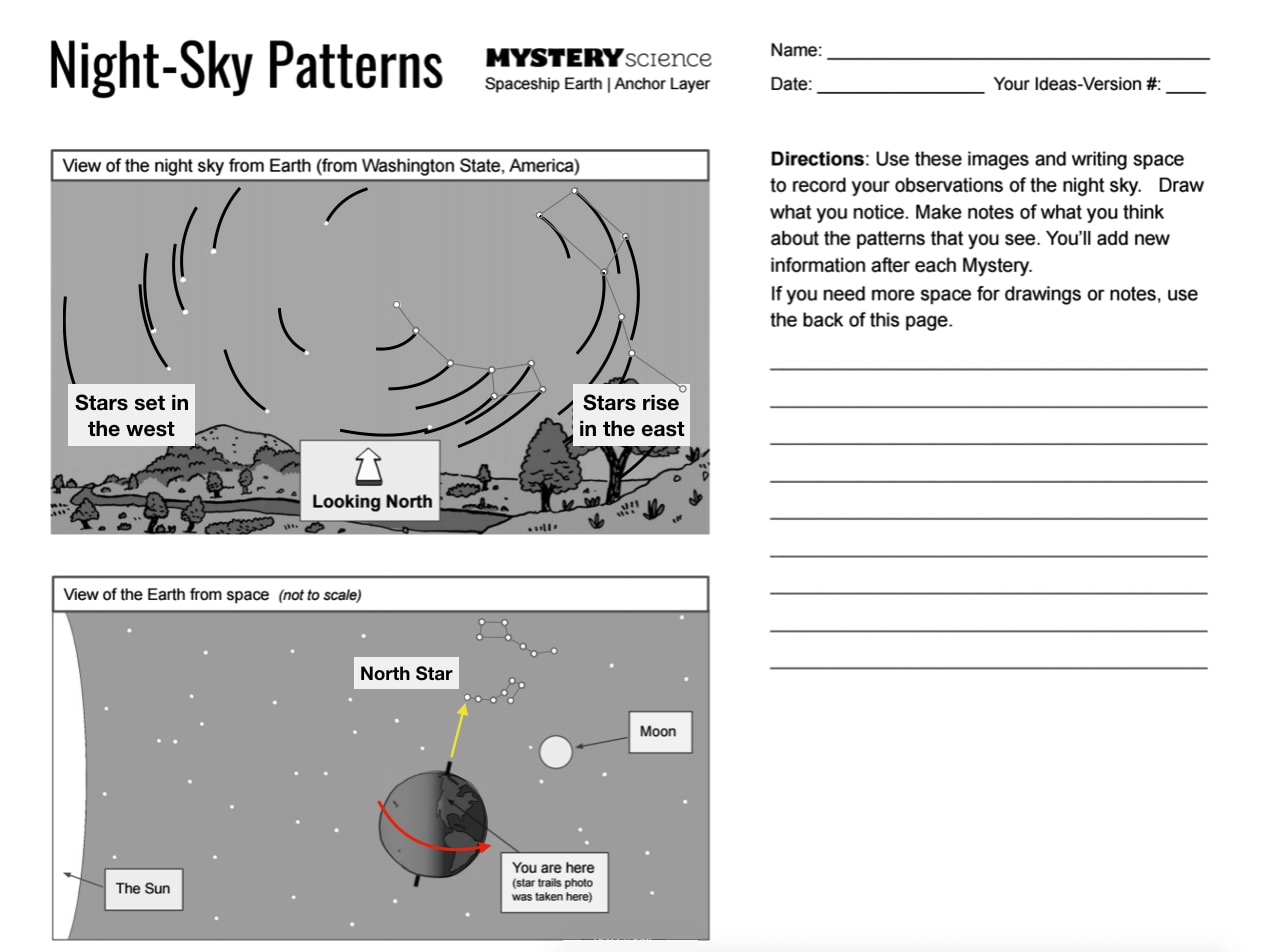
As the Moon orbits the Earth, we can see that it is lit up in different ways by the Sun. This happens because we are on a spinning Earth, and the Moon is orbiting around us!

The patterns of movement that appear in the sky during the day and night come from simple causes: objects in space spin around their own axis and orbit around each other.
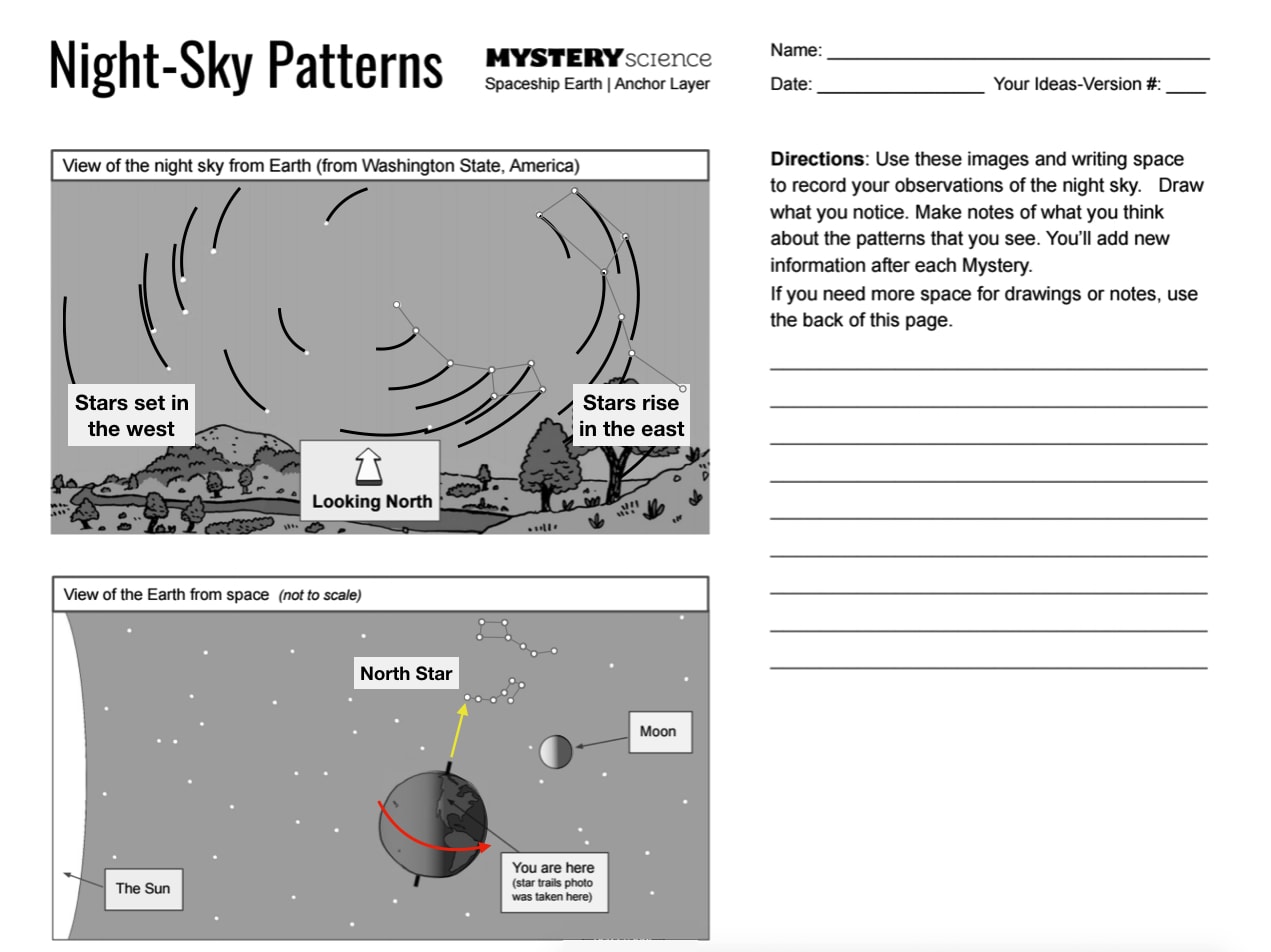
In today's activity, you'll use what you have learned in this unit to design a way to tell time.
You already know how to tell time with a shadow clock during the day, so we have a special challenge for you. We want you to design a time-keeper that works AT NIGHT, when the sun isn’t out.
We’ll help you meet this challenge by walking you through the process, step by step.

